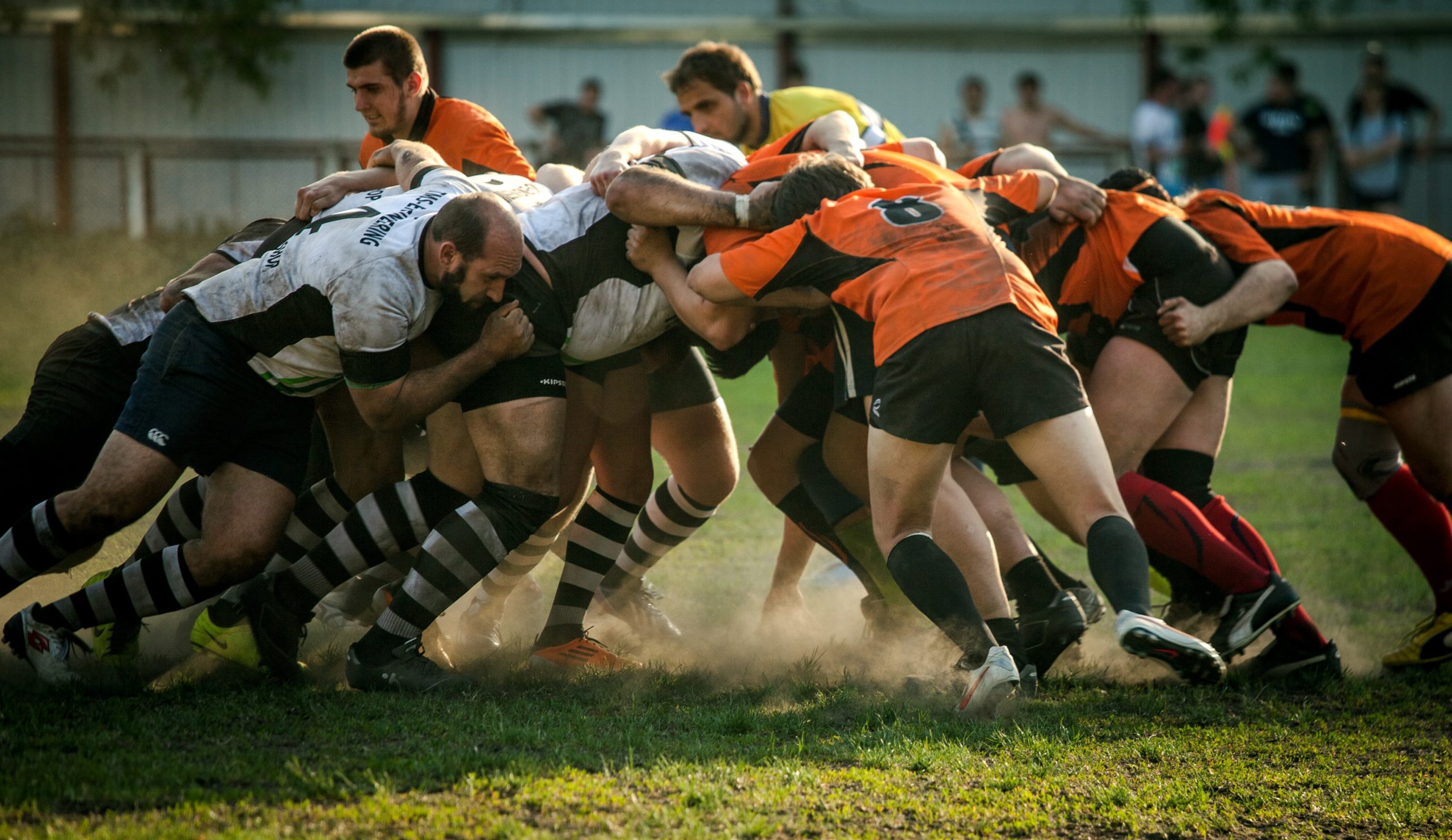Have you ever seen a rugby scrum? You might be shocked to see players clashing without the benefit of helmets or padding typical of American football. So it would be natural to ask whether rugby is a safe sport to play at all.
Luckily for us, there is some research that has gone into the relative safety of rugby — in particular, as a comparison to American football.
Research shows rugby players are more likely to get injured
A 2016 paper, Comparison of Injuries in American Collegiate Football and Club Rugby: A Prospective Cohort Study, examined this issue. Researchers from The Ohio State University calculated the relative injury rates of rugby and football players as a percentage of “athlete-exposures”, or opportunities to be injured in a game. They found a number of statistics showing just how rugby players were more at risk:
- The overall injury rate is more than twice as high in rugby relative to football
- Injury rates for shoulder, hand, leg and for sprains, fractures, and contusions is more than four times as high in rugby as for football
- Concussion rates are 2.5 times higher in rugby than football
- The rate of season-ending injuries (>3 months of time loss) is 25 percent higher in rugby relative to football
The conclusion from the study: “Overall injury rates were substantially higher in collegiate rugby compared with football. Similarities between sports were observed in the most common injury types (sprains and concussions), locations (lower extremity and head), and mechanisms (direct player contact). Upper extremity injuries were more common in rugby, and the rate of season-ending injuries was similar between sports.”
Stories of injured rugby players are difficult to ignore
Reporter Ben Heather wrote an expose of rugby injuries in New Zealand. He highlighted the issues in identifying and treating head injuries in the sport:
Former All Black Steve Devine needs Botox every few months. He doesn’t do it to keep his face youthful, he does it to stop the pain. The halfback’s rugby career ended in 2007 after a decade playing for Auckland, the Blues and 10 caps with the All Blacks.
His head troubles started five years earlier while playing for the All Blacks against England at Twickenham, where he was knocked out twice in the first half. In 2003, he was knocked out again in the Super 12 semifinal, missing the Blues’ win in the final.
After that, the knocks kept coming, culminating in an enforced six-month break in 2006 after he played a game against the Reds in Brisbane while essentially asleep on his feet.
The final blow came in the opening NPC game against Counties-Manukau in 2007, when he caught a swinging arm at the back of a scrum. His playing days, the doctors said, were over.
The next morning he woke with a splitting headache, which stayed with him for the next 3 1/2 years.
“For a while, it was pretty tough for me. It wasn’t only struggling with the fatigue and the headaches. It was my career that I had lost.”
So is rugby too dangerous to play, then?
It depends on your level of risk tolerance. Many people play rugby every year — in amateur leagues, college, and professionally — without serious injury. But if you’re worried about head trauma in particular, it may be better to take up a different sport.
Photo by Olga Guryanova on Unsplash


